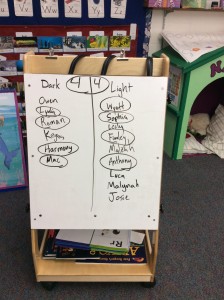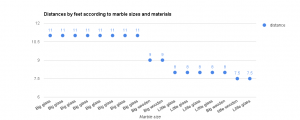At McCornack, the kindergarten teachers have worked together to develop their own science units, implemented over a month-long period.
Teaching science in kindergarten focuses on exploration, making hypothesis (guesses), and performing experiments to find results. We make observations in our science journals (such as watching bread molds grow over several days), and ask questions such as, “will the bread mold grow faster in the light or in the dark?”
Here’s an example of a student observation:
After a week of growing bread molds, we compared journal entries to find which bread grew mold the fastest. This experiment found that mold grew at the same rate, even if it was in the light or the dark.
Another one of our favorite experiments is rolling different sized marbles down a ramp. Some marbles are made of wood and others are made of glass. We found that generally, big glass marbles would roll the furthest. We recorded this data, in feet, and placed it on a scatter plot. Check out the results:
We then asked, what if we rolled the marbles down a plastic ramp? What if we rolled a marble down a ramp onto a paper floor? An aluminum floor? We discovered that the paper and aluminum helped the marbles roll much further, because of the lack of friction. The plastic ramp made no difference in how far the marbles rolled.




